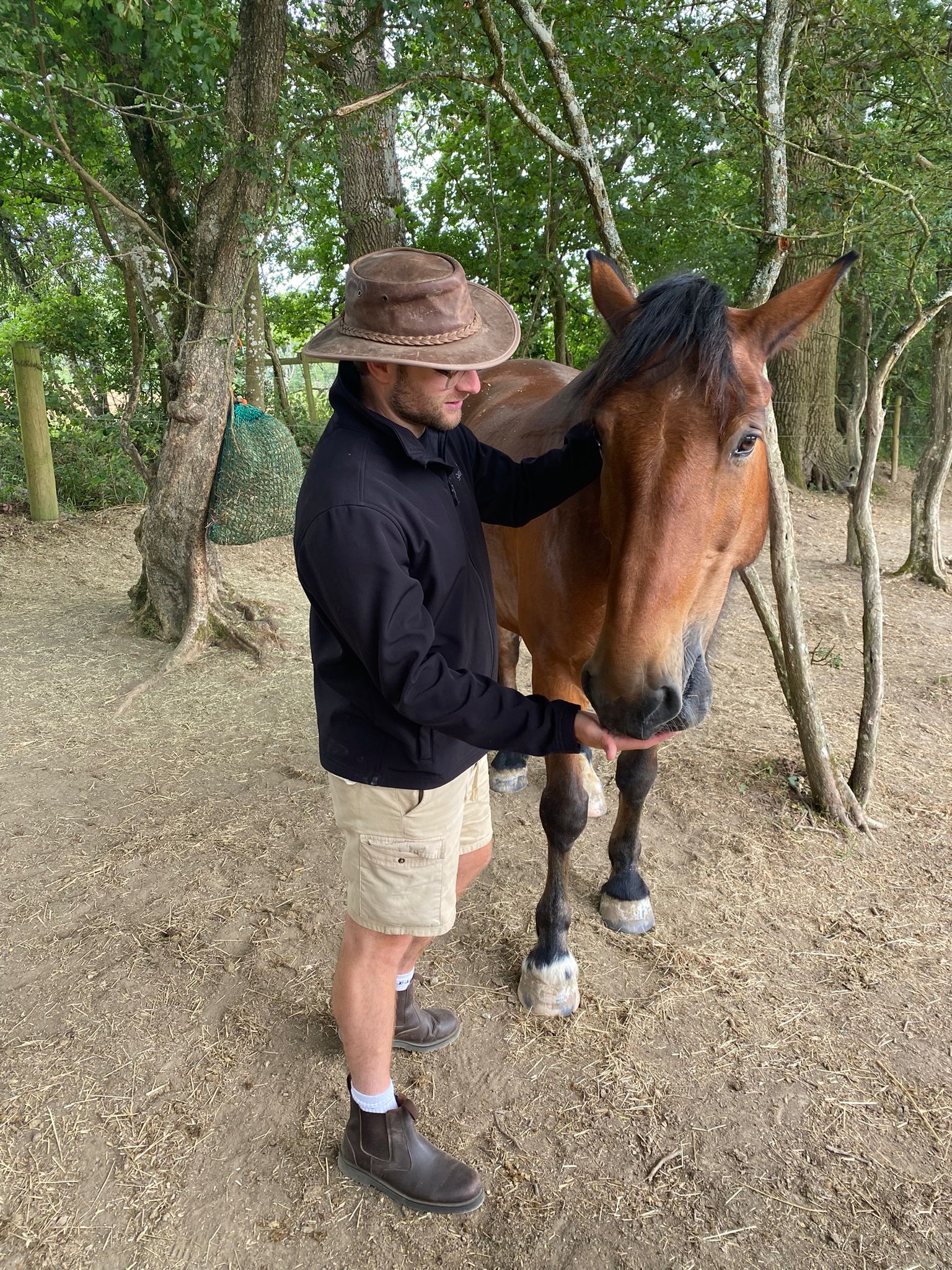Osteopath for Horses
Your Horse's Path to Natural Healing
As an experienced equine osteopath, I treat your horse as a whole athlete, not just their symptoms, using gentle, hands-on techniques to address the root causes of their discomfort.
I’m passionate about helping your horse move and perform better. Whether they’re dealing with back stiffness, restricted movement, or performance issues, I’ll work with their body’s natural healing abilities to restore balance and provide lasting relief.

Equine Osteopathy Targets The Whole Body
Equine osteopathy is a comprehensive, hands-on approach that recognizes how your horse’s entire body works as one interconnected system.
Through gentle manipulation techniques to release restrictions and improve mobility, I can support your horse’s natural healing mechanisms and optimize their movement patterns without medication or invasive procedures.
-
Back and Neck Problems
Head carriage issues, lameness due to back or neck problems.
-
Reduced Performance
Reduced or inconsistent performances can be the result of an underlying injury or musculoskeletal change, treating these areas can have a positive effect on performance.
-
Changes in Gait
Such as lameness, altered stride length, uneven gait or difficulty turning in one or both directions.
-
Behavioural Changes
Some behavioural changes can be a symptom of pain. Examples of these in horses may include head shyness, kicking, rearing and unwillingness to jump or be ridden; while in dogs it may result in unwillingness to exercise, difficulty walking/ jumping or aggression. Osteopathy may be able to help with these by treating the underlying causes.
-
Age Related Issues
Although we cannot fix ageing related conditions such as arthritis, osteopaths can help in maintaining mobility in older horses.
-
Assisting in Rehabilitation
Including from minor injuries such as trips or falls as well as more serious injuries. Osteopathy can help at the site of injury, as well as assist in maintaining mobility in horses while on box rest.
-
Other Issues
Osteopathy works on finding the root cause of pain. We work on the musculoskeletal system, and cover all joints and muscles from head to toe.

Pricing For Horses
Horses are incredible athletes, but they can also be prone to aches and pains due to training, competition, or deterioration over time. I will come directly to your stables and assess and treat your horse in their familiar environment. This approach helps identify any musculoskeletal issues that may be affecting your horse’s comfort and performance.
-
Initial Consultation
£100This is where we assess the horses movement via walk up, trot and canter. We will also assess via palpation and moving each joint passively. Where possible, the horse should be ridden by the rider, especially if the complaint is exacerbated when ridden or felt when ridden, e.g. turning.
Consent from the vet will be needed if the issue does not come under a ‘maintenance’ treatment as per the Veterinary surgeons act 1966. This will be discussed pre consultation.
-
Follow Up Consultation
£80After initial consultation, follow up consultations will be tailored to the individual needs of the horse and rider.
-
Group Discounts
For each horse at one yard, there will be a group discount.
This will include a £10 discount for each horse at the same yard. (E.g 3 horses = £210 instead of £240)
Check Out What My Clients Say
I've Got Answers
It's easy to have a lot of questions when you're looking at doing something new, let me help you find your way.
-
What is osteopathy?
Osteopathy is a type of manual therapy that uses our eyes and hands to find, diagnose and treat musculoskeletal conditions. Osteopaths apply a range of techniques to help reduce pain, increase joint mobility, relieve muscle tension and enhance the blood and nerve supply to tissues, helping the body’s own healing mechanism.
-
Whats the difference between an osteopath and a chiropractor?
Chiropractors focus mostly on spinal integrity, using x-rays of the spine to form a diagnosis and work on subluxations with spinal manipulation. Sessions are generally 15-20 mins and often recommended 2-3x per week. depending on the condition.
Osteopaths like to find the root cause of a problem, using palpation and examination of the body using orthopedic testing to confirm a working diagnosis. From there we then like to treat the symptoms and cause of pain, allowing the body to regain balance. Sessions generally last 30-45 mins and recommended 1-2x per week depending on the condition.
-
What can osteopaths treat?
Osteopaths can treat a wide range of conditions including:
- Neck and back pain
- Headaches arising from cervicogenic origin
- Arthritis
- Shoulder and elbow pain
- Pelvic, hip and leg pain
- Tendon injury
- Pregnancy-related pain and postural problems
- Minor sports injuries including ligament and muscle strains
-
What techniques do Osteopaths use?
Depending on your symptoms, some of the treatment methods I use include:
- Soft tissue massage
- Spinal manipulation
- Articulation and mobilisation of joints and muscles
- Muscle energy technique
- Stretching to encourage muscles to work against resistance
- Dry needling
-
Will I feel sore after treatment?
As your body readjusts and adapts to the changes that occur during treatment, you may sometimes feel tired or even a little achey (soreness rather than pain) after treatment. If this happens, effects can last from 2-24 hours after treatment. After this you should feel much better!
Check Out My Other Services
It’ll tell you everything you need to know


